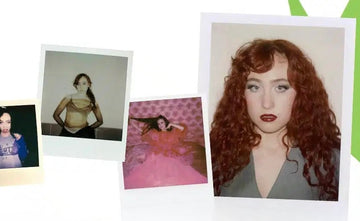
Why Are My Photos Blurry/Out of Focus?

If you're shooting indoors with low light and no flash, the shutter stays open longer to balance the exposure.
If your subject moves during the shot, the photo will be blurry. Always use flash when shooting indoors.
If you used the flash but the photo is still blurry, the flash on your Polaroid camera may be faulty and require repair.
Don't shoot too close to the subject, or the Polaroid camera lens might not focus correctly. Remember your camera has a minimum focusing distance.
Why Do My Photos Have Vertical Streaks?

This usually happens due to uneven distribution of paste inside the chemical pods, which causes visual differences. It may occur because the paste has dried out or due to a chemical reaction. This problem typically appears with expired or improperly stored film.
How to avoid it?
1. Ensure the film is not expired and use it within 12 months of manufacture;
2. Always store your film properly;
3. If the film is in date and stored correctly, it could be a manufacturing defect.
Why Are My Photos Blue or Faded?

This is usually because you shot outdoors in cold weather. When film is exposed to very hot or cold temperatures, chemical reactions can’t work as intended. In colder conditions, chemical processes slow down significantly.
Also, shooting with black and white film in cold weather often results in very dull and overexposed images.
How to avoid it?
1. Shoot at room temperature (13–28°C);
2. In colder seasons, keep the camera and photos inside your jacket, close to your body to stay warm.
Why Are My Photos Completely Black or White?

In both cases, the issue is likely with the camera. The camera calculates the correct exposure by adjusting the shutter speed and possibly the aperture (depending on the model).
When the shutter mechanism doesn’t work properly, the image will be incorrectly exposed.
Alternatively, the problem might lie with the film that has expired. As the film ages and becomes chemically unstable, the photos produced may start to deviate from the norm. Overexposure is one of the most common defects associated with expired film.
How to avoid it?
1. Shutter errors are often intermittent (they may affect one shot but not others). If you’re losing many shots, your camera might need repair.
2. Polaroid cameras need a lot of light — always shoot in bright outdoor light or use flash.
3. Check the manufacture date on the film. Its shelf life ends 12 months after the production date.
Why Are My Photos Too Bright / Overexposed?

The image is very sensitive to bright light during the first few minutes of development. It’s important to protect the photo from bright light immediately after it ejects from the camera and keep it in a dark place until fully developed.
Keep the exposure compensation dial in the middle so the camera can determine the optimal exposure. If your photos are consistently overexposed, try moving the dial toward the darker setting.
Film works best at temperatures between 13–28°C. If it’s colder (like in winter), photos might come out overexposed.
When shooting close-up with flash, remember to maintain the minimum focusing distance.
Why Are My Photos Pink or Orange?

If the film is exposed to extremely warm or cold conditions, the chemical reactions won’t happen properly. High temperatures significantly speed up the development process.
Shooting in conditions above 28°C may lead to low contrast in black-and-white photos and a pink/orange tint in color photos.
How to avoid it?
1. Shoot at room temperature (13–28°C);
2. In hot conditions, store your film in a cooler place, away from direct sunlight — even in a cooler bag if it’s really hot.
Why Do My Photos Have Low Contrast?

Polaroid film is designed to work in all conditions and deliver consistent contrast levels.
Overexposing or underexposing the photo shifts tonal values toward pure white or black. As a result, the photo contains fewer unique brightness levels. Improper exposure lowers contrast.
Temperature affects contrast too: high temperatures reduce contrast in B&W shots, while cold temperatures do so in color photos.
Low contrast can also result from poor storage or using expired film.
Why Are There Blue Marks on My Photo?

Blue marks are overexposed areas. It means the protective layer didn’t have enough time to fully stabilize before the film was exposed to ambient light.
How to avoid it?
1. Clean your camera rollers;
2. Use a film shield;
3. Check that your film hasn’t expired;
4. Store your film properly.




